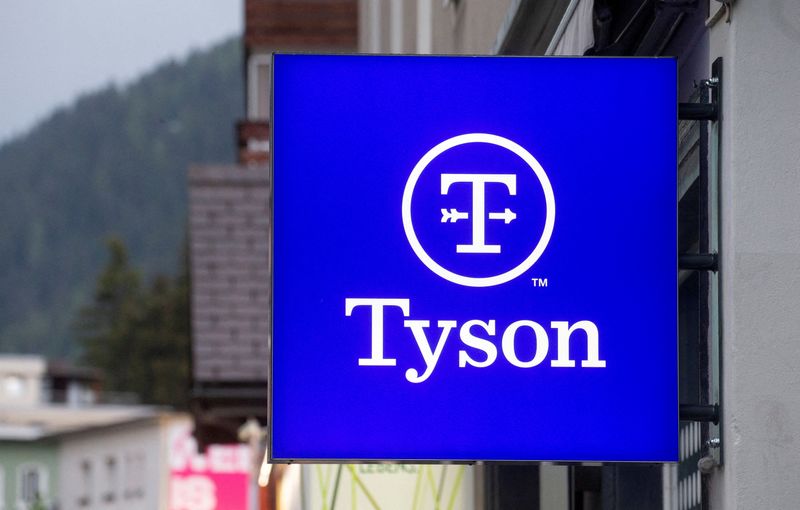By Tom Polansek and Praveen Paramasivam
(Reuters) -Tyson Foods shares fell 10% on Monday as the U.S. meat processor reported weaker-than-expected quarterly earnings and warned of supply constraints and reduced demand for high-priced beef.
The sell-off left shares down about 8% for the year and 20% from an all-time high reached in February, as inflation and broader economic concerns bite into a U.S. meat sector that had enjoyed booming profits throughout the pandemic.
Tyson said it could not fulfill all its orders for prepared foods products or chicken due to limitations on supplies and labor. In the company's sprawling production plants, staffing remains below pre-pandemic levels and absent workers were restricting output, executives said.
Total sales volumes fell 1.9% in the April to June quarter and were down 1% for the nine months ended on July 2. The prepared foods business, which includes Jimmy Dean sausages and Ball (NYSE:BALL) Park hot dogs, saw volumes drop 8.5% in the quarter and 5.5% over the nine-month period.
"We've got a lot of work to do to grow our business," Chief Executive Donnie King told reporters.
To boost chicken supplies, Tyson said it plans to process some 40 million birds weekly in the July to September quarter, up from about 37 million a week on average in fiscal 2021.
Consumer demand remains strong for chicken and beef, although some people are forgoing premium steaks for cheaper options, said Shane Miller, Tyson's president of fresh meats. The company also reported reduced demand for pork.
"The beef segment is past its margin peak, and recent industry-wide pork processing margins have been soft," JP Morgan said in an analyst note.

Beef prices dipped 1.2% in the quarter, while chicken prices soared 20.1%, Tyson said. The company has raised meat prices to offset surging inflation, including $145 million of higher costs for animal feed in the last quarter.
Adjusted quarterly earnings per share were $1.94, missing estimates for $1.98. Quarterly sales increased to $13.50 billion from $12.48 billion last year, topping estimates for $13.25 billion.